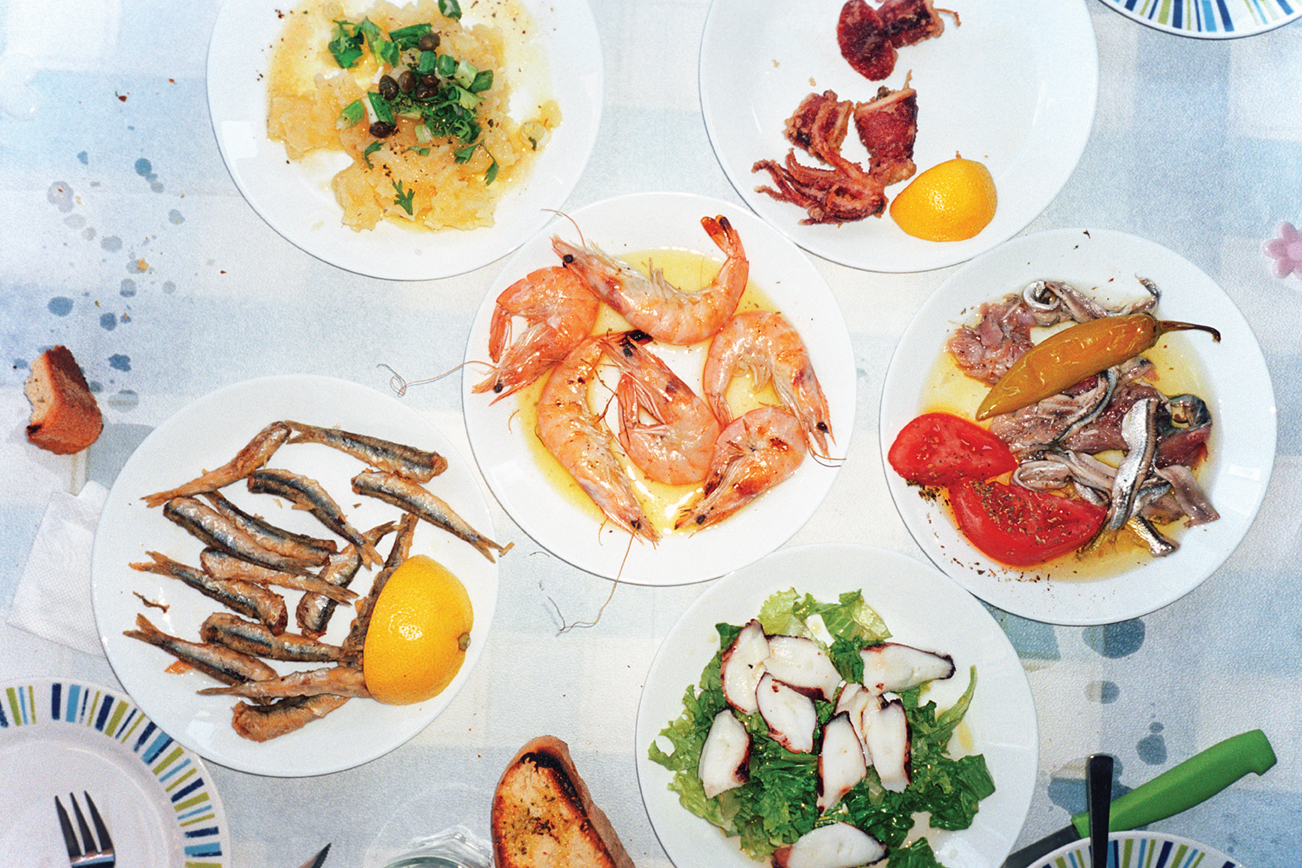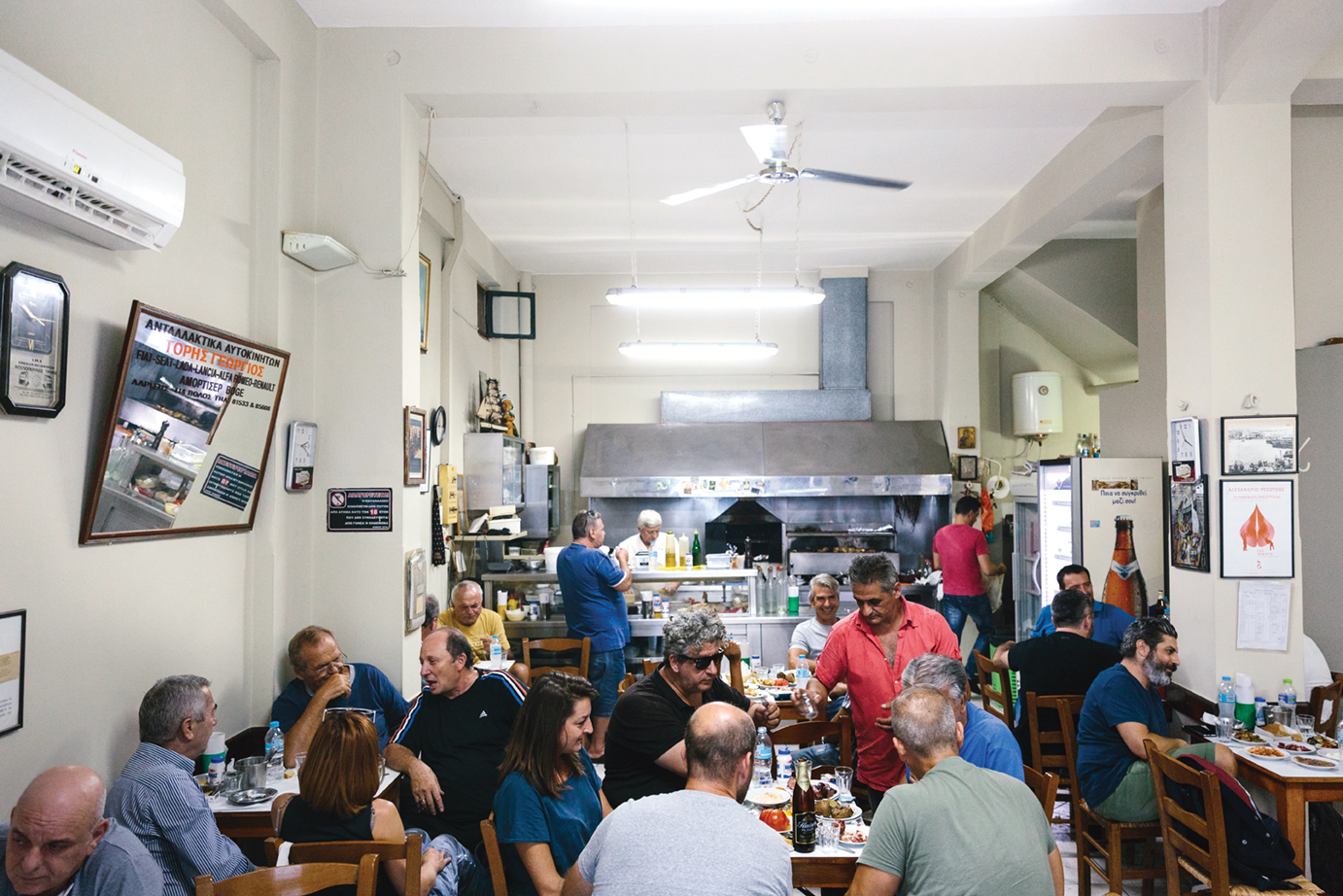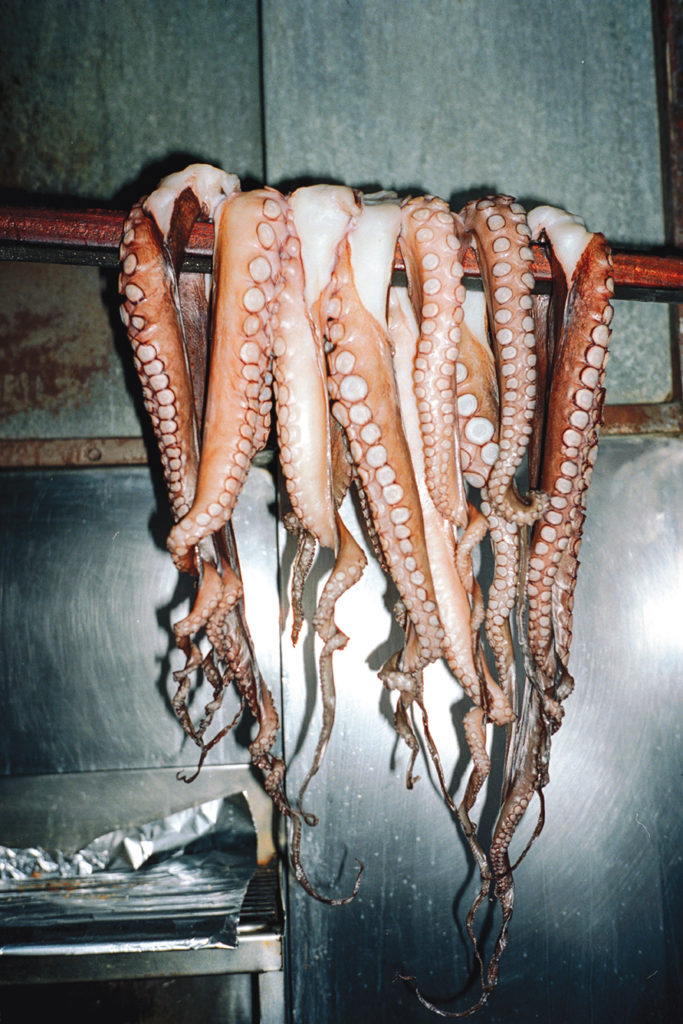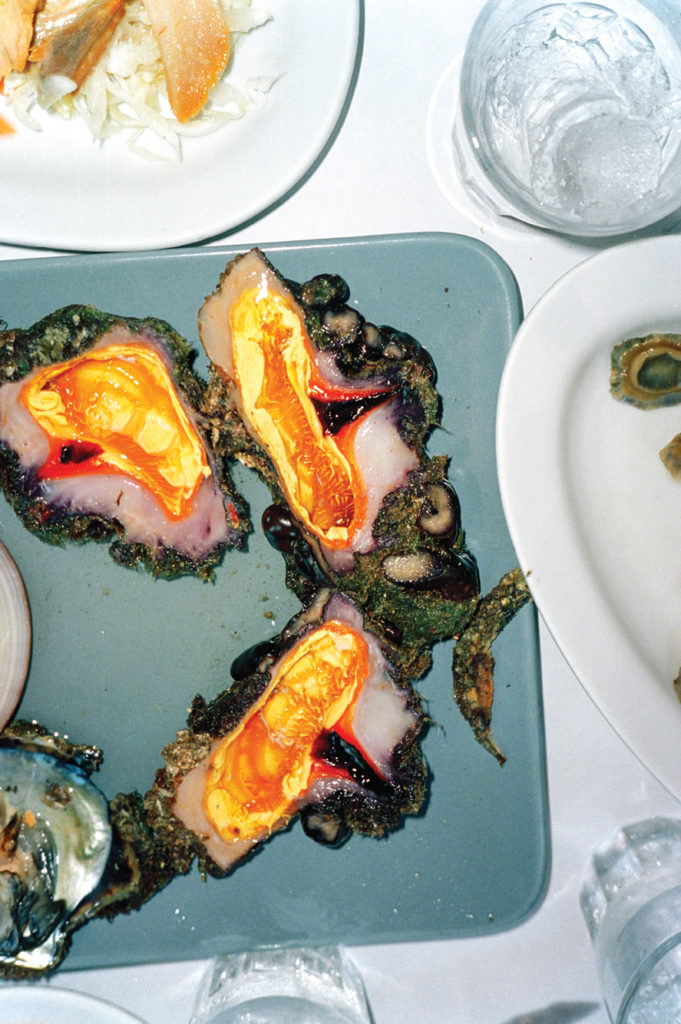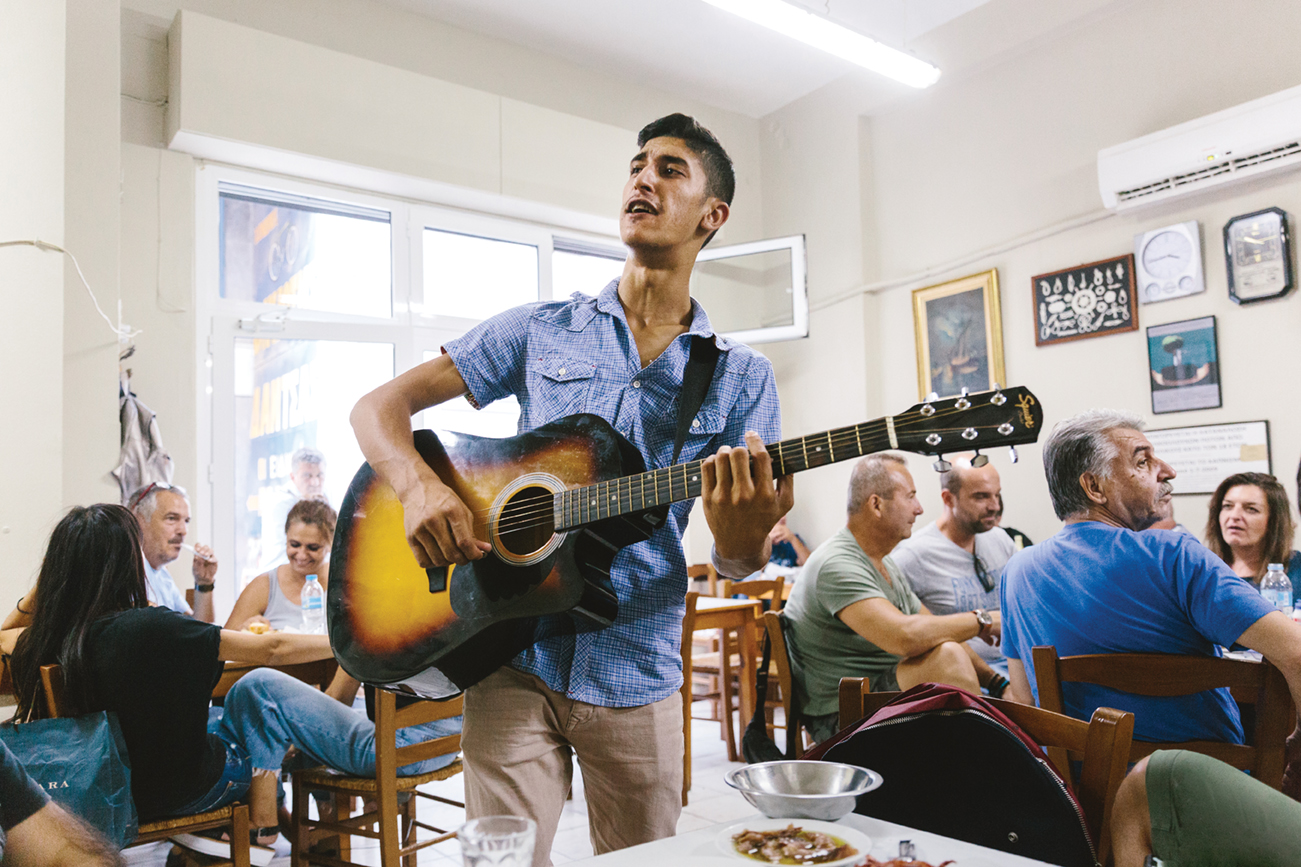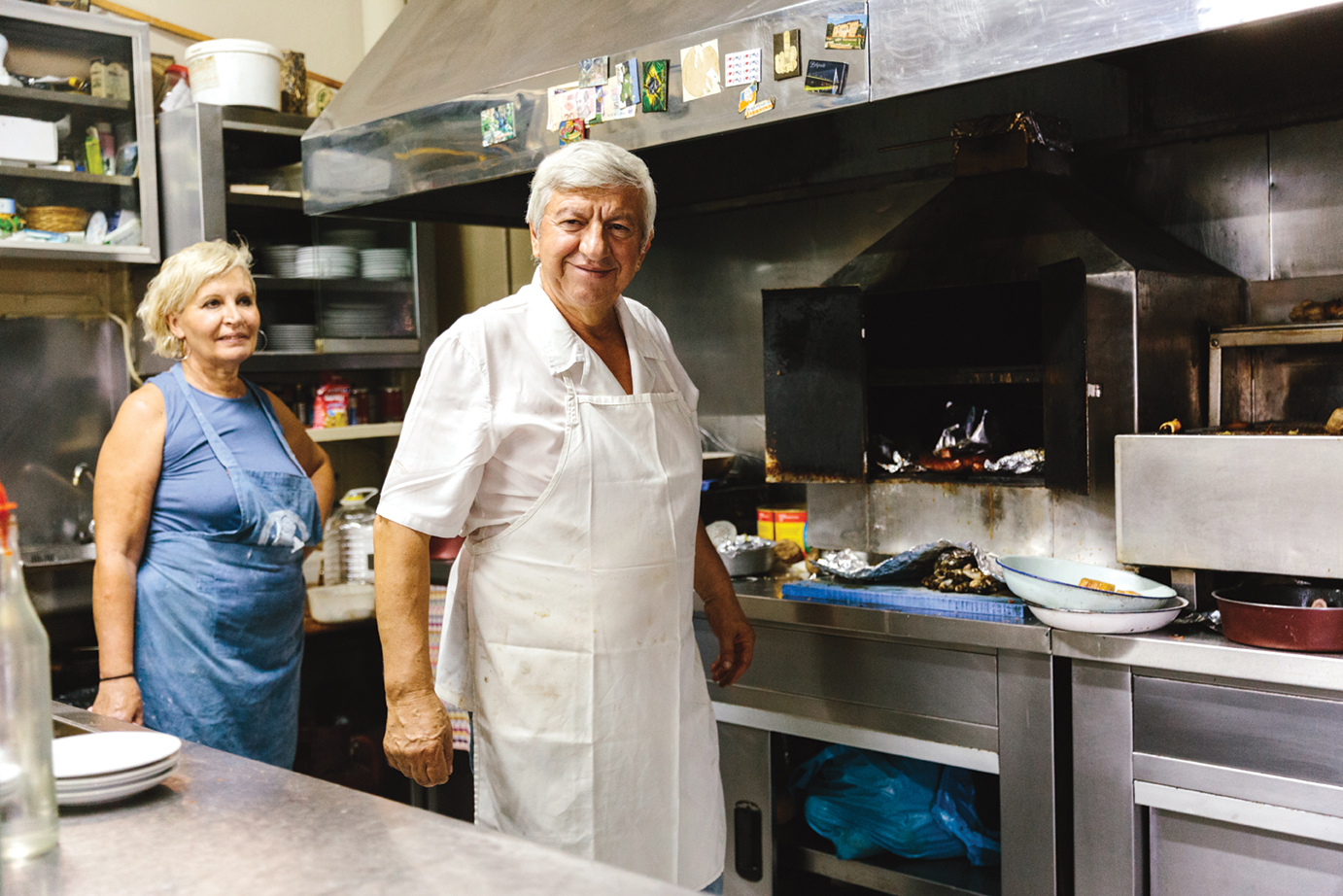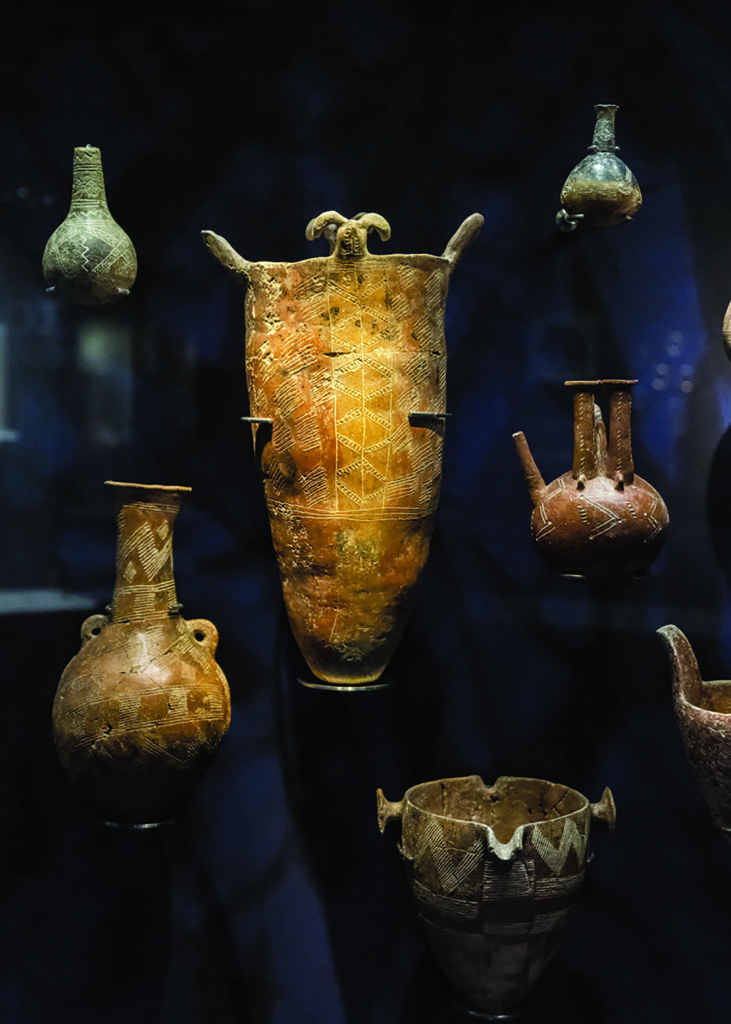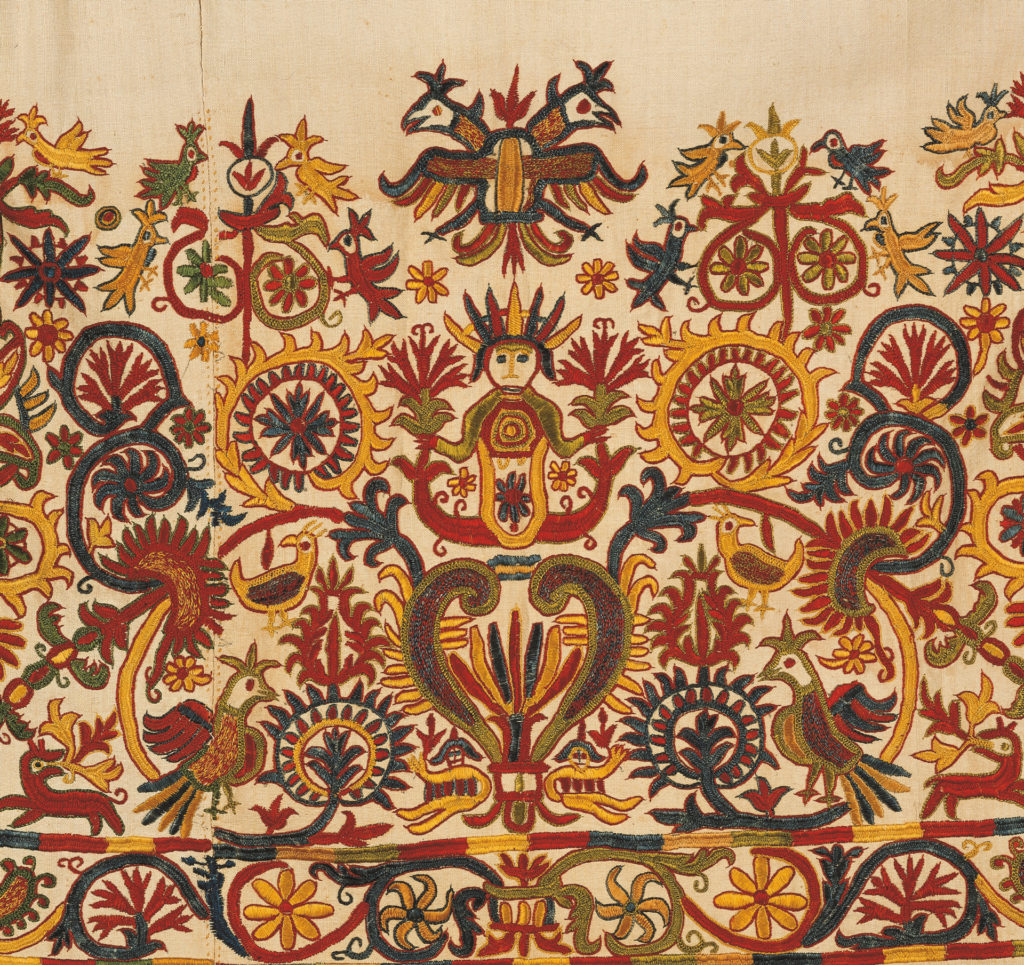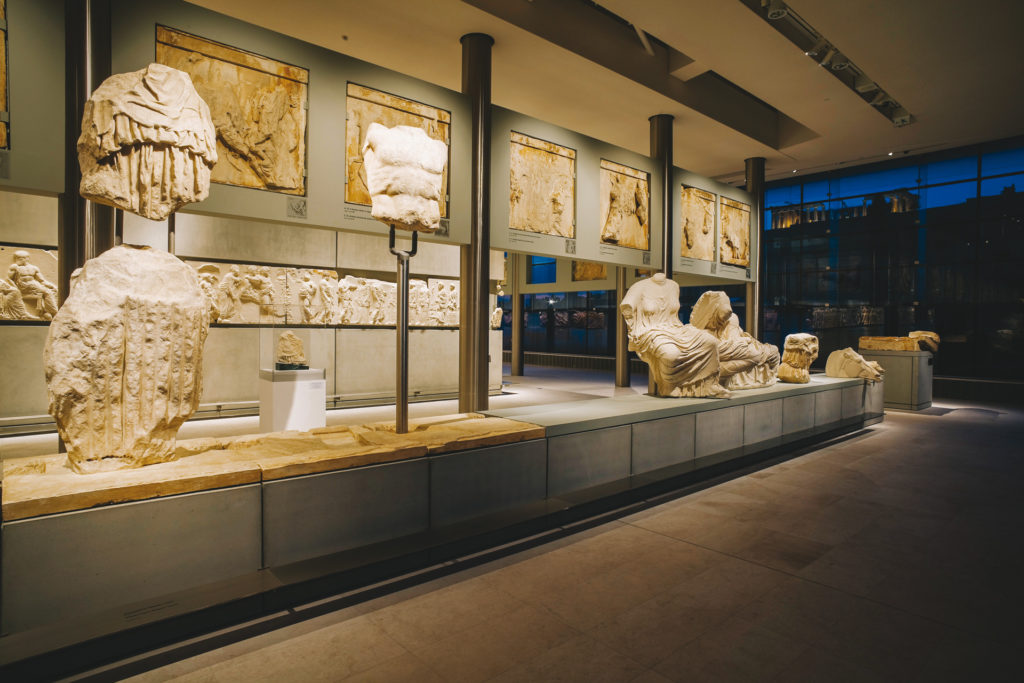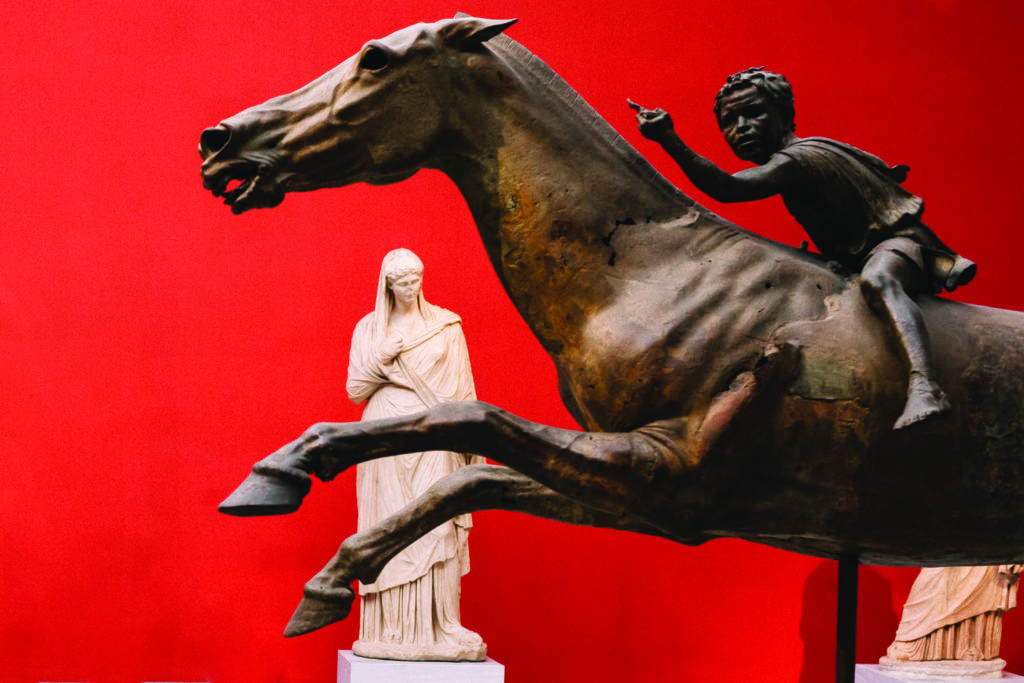If you look at a map, you will find the city of Volos enclosed in the “arms” of Pagasitikos Gulf, the port from where Jason once sailed with his ship, Argo for the distant shores of Colchis and at the foot of Pelion – a gentle, fertile mountain and home of the mythological Centaurs.
Once you arrive in this quaint city you will be welcomed by the salty sea breeze and the subtle scent of ouzo and grilled octopus. The silence and quasi-biblical stillness in the streets is baffling, but once you pass by one of the 200 Tsipouradika that cater to the 180.000 inhabitants of the city, it becomes clear that all Voliotes (the people who live in Volos) stick to their ritual pause for a glass of tsipouro religiously. Of course, after that the city seems even more deserted, since after a prolonged tsipouro session a siesta is always required to help clear your head and get back to work. And tsipouro will be in order again, once the workday has ended.
Tsipouradika in Volos are not what you would call a restaurant. It is a tradition imported by the Asia Minor refugees who came to continental Greece in 1922. It is a piece of tangible history, closely associated with the local economy, politics and even religion. It has always been an alternative form of communication, some sort of psychotherapy taking place amongst the members of a secret fraternity, with its own semiotics and customs. Greeks from other places in the country know very little about all this and the people of Volos are not keen in revealing its secrets. Tsipouro is for the initiated. Drinking tsipouro has its own savoir-vivre, one that can’t be taught. Those who are interested in learning about it should carefully watch how the locals do it, in order to fully appreciate this ritual!
In the beginning of the last century and in a country where people were hungry and worked hard to bring about industrial growth, the dock workers in Volos were the ones who introduced the concept of Ouzeri. On their way home after work and before lunch, they would stop by an Ouzeri to clink their glasses – or “thimbles” as people call the little glass where tsipouro is served – with their friends and decompress after a hard day. Men talked about the hardships of life. Sharing their concerns made them feel part of a group that faced similar problems and alleviated their existential angst by reinforcing their sense of community. This allowed them to see that, no matter what had happened today, tomorrow will be a new day and they returned home feeling better.
The consumption of tsipouro takes place with the drinkers either standing, or sitting in parallel chairs with a table in between. The people who share a “thimble” look straight ahead, not into each other’s eyes. Sip by sip, this closeness allows confessions to surface and words that struggle to emerge. This spatial arrangement is reminiscent of Freud’s couch, or of Scottish men drinking their whisky side by side in a pub. A form of rudimentary psychotherapy, born out of necessity and the ways of the Mediterranean.
The inhabitants of the Thessaly region used to accompany tsipouro with meat, but that changed when the bon vivants from Asia Minor were forced to resettle here. They brought their own distillation techniques with them, the culture of great hangouts for drinking and, above all, they added seafood to the list of delicacies enjoyed with tsipouro.
For the sea was right here. Men would casually dive in and catch an octopus, shellfish, or little fish, which they would grill on makeshift stoves, inventing the humble and much appreciated meze. Olives, a few slices of cucumber, cured sardines, a tomato cut in half and a smoked herring baked over a newspaper. A frugal, impromptu bite that highlights the anised flavor of alcohol and prevents drinking with an empty stomach.
Two distinct cultures and branches of Greek history intertwine to form the tradition of Tsipouradika in Volos. Greeks knew the secrets of distillation and viticulture, since the ancient times. The monks in Mount Athos have left us written documents about grape distillation that date back to 1590 AD.
After the Fall of Constantinople, the coppersmiths from Agrafa migrated to Larisa, Kozani, Thessaloniki, Asia Minor and Plovdiv propagating the use of copper stills, which were pretty much the same as the ones used by alchemists in the Middle Ages. In time, all these regions started distilling grapes, adding other ingredients such as aniseed, fennel, coriander, Chios mastic, figs, damson, blueberries, cranberries and cane apple fruits, depending on their crops. The monks of Mount Athos relayed their knowledge to the poor viticulturists and since then, Greece has been distilling its all-time favorite drink, non-stop. Ouzo, Raki, Souma, Tsipouro with, or without aniseed – of single, or double distillation. There are as many recipes and flavors as the people using pots stills, which are considered a sacred heirloom, passed down from one generation to the next. Distillation is a procedure that lasts only a few days and is experienced intensely, as a Dionysiac period, when one prays to the Gods of fertility and feast.
The inhabitants of the Thessaly region used to accompany tsipouro with meat, but that changed when the bon vivants from Asia Minor were forced to resettle here. They brought their own distillation techniques with them, the culture of great hangouts for drinking and, above all, they added seafood to the list of delicacies enjoyed with tsipouro. The drinking culture exchange worked out fine and everybody agreed that seafood and tsipouro were a match made in culinary heaven.
Over time, Tsipouradika evolved. Initially a male realm, they were located in the narrow alleys of Nea (New) Ionia, the neighborhood where the refugees first settled. Even today, this is where you’ll find the most authentic ones. Back then they served octopus, pickled cabbage, Tsitsiravla (pickled wild pistachio leaves), mackerel, all kinds of cured fish, pickled skipjack tuna and some cheese. In the ’70s the Ouzeri became known as Tsipouradiko, while roughly at about the same time women were granted access to this “sacred place”.
Even though Tsipouradika may have started out as a working class “men’s club”, they quickly evolved into a very democratic institution, where everyone was welcome, regardless of age and class. So be advised, there are no Tsipouradika catering only for rich, or poor people. Prices and atmosphere are, more or less, the same everywhere. It is an inexpensive pleasure and everyone can participate. Drinks and food are equally distributed in small plates and glasses are placed in front of everyone, tsipouro being poured in turns from the ubiquitous “quarter-liter” vial that holds precisely 250 ml of the precious liquid.
Tsipouradika have no menus and you do not order your food. If you do, then everybody will know that you’re a foreigner, which is in no way a guarantee for a better treatment. Drinks are ordered silently, usually signaling with your fingers how many quarter bottles you want, adding a simple “with” or “without” to signify whether the tsipouro should contain aniseed or not.
Tourism and the establishment of the new University in 1984 filled the city of Volos with new blood. The Greek economy boom of the ’90s brought about affluence and a change in the profile of the traditional Tsipouradiko that had to adapt in order to survive. By this time, Greeks had lined their pockets with newly earned money and acquired a novel lifestyle. The frugal, humble meze was cast aside and stylish, touristy, shiny new Tsipouradika started serving an array of dishes that were inconsistent with the meze philosophy, built on the history and taste of tsipouro.
The recent economic austerity (meaning there is no more money to squander thoughtlessly), combined with a “back to the roots” mentality that had completely been forgotten during the “golden” xenomania years, signaled the gradual return of Tsipouradika to their traditional values. At the same time, young people belonging in the 18-25 age bracket seem to be discovering the pleasures of tsipouro, a quality drink that inebriates at a small price and brings everybody together. Tsipouradika are no longer considered an antiquated form of entertainment, a privilege and sanctuary of old men, but rather as an integral part of a lively expression that reinstated tsipouro on our table and in our hearts, casting aside vodka, gin and whisky.
So, follow me if you really want to know what is in a Tsipouradiko, this obsession that doesn’t allow any other type of restaurant to prosper in Volos, since its people will only visit the “new” place once, or twice out of curiosity and then go straight back to their eternal love. Here, instead of a formal invitation for drinks and chow, people simply suggest “are you up for one?” and it is mutually understood and agreed that there will surely be more than “one” tsipouro.
The practically identical decoration of Tsipouradika always flirts with Greek kitsch. Their walls are adorned with photographs of local football teams, portraits of popular singers, shells, fishnets, models of boats and barges, clocks, calendars, all in blue and white hues and terrazzo floors, where the tables are set with white paper tablecloths and an open kitchen that in fact is nothing more than a display fridge with a work surface behind it, a grill and a frying pan. If there’s music playing, then it will probably be Kazantzidis singing his lachrymose songs, talking about lost loves and the Greek refugee wave of the ’60s. However, the steady melody in a Tsipouradiko is nothing but the hubbub of friends chattering, speaking louder and louder, as glasses are filled and emptied again. A tin can or plactic bowl is set in the middle of the table for the “rubbish”, i.e. empty shells of seafood and fish bones. Little meze forks and a single plastic-handle knife per table are distributed to the patrons and at most Tsipouradika they will ask if you want a plate.
Tsipouradika have no menus and you do not order your food. If you do, then everybody will know that you’re a foreigner, which is in no way a guarantee for a better treatment. Drinks are ordered silently, usually signaling with your fingers how many quarter bottles you want, adding a simple “with” or “without” to signify whether the tsipouro should contain aniseed or not. The owner does not charge for the meze, only for alcohol. In the end, they count the quarters on the table and give you the bill. The meze that accompanies every quarter is served in a hierarchical order and it is the same for all patrons. This method allows the owner to magically arrange for his provisions of fresh seafood on a daily basis and earn an honest living.
The first dishes are sour and salty, the ideal flavours to make you crave more alcohol: pickled cabbage, red peppers, stuffed eggplants, Tsitsiravla and samphire –the Volos pickled specialties – and cured fish: sardine, mackerel, grilled octopus, or marinated anchovies. By ordering a second round, you automatically upgrade your meze status: a small fish, an anchovy, monkfish, skipjack tuna, stingray, sardine, red sea bream and codlings. This is the moment when one starts to appreciate the good, traditional owner of a Tsipouradiko. The more the tsipouro rounds, the better the meze gets: raw shellfish, grilled scallops, squid, shrimp, rock lobster, steamed mussels. It is very rare for Tsipouradika to serve stewed dishes; only the younger generation does that. Meanwhile, a baked potato with just a tad of olive oil and butter will help soak up the alcohol from your stomach and keep you going strong.
Some more sophisticated places might offer rare dishes like squid eggs, olio (octopus ink sauteed with a little butter, tomato and herbs), grilled fish eggs, cured herring eggs, royal oysters, fish livers and deep fried sea anemones. These are the famous Kolitsianoi.
In a Tsipouradiko there’s no dessert, only the trophy of an exceptional meze if the alcohol consumption reaches legendary levels. This could be a big rock lobster, a bigger fish, a fat crab, as well as fried eggs with pastirma (air-dried cured beef, covered in a special spice paste), a dish that embodies both the continental and Asia Minor traditions. There might be differences in the dish rotation and slightly altered serving patterns, but all Tsipouradika adhere to the fish and sea food-oriented culinary tradition of the city. Home of a large fish auction, Volos is not only self-sufficient, but also has a taste for the peculiar creatures that live in the sea. People here turn their nose up at fish-farming products, or imported fish and seafood. The bill never exceeds 10-14 euros for all these delicacies, when a single one of those dishes in Athens can cost around 25 euros and would never be so fresh.
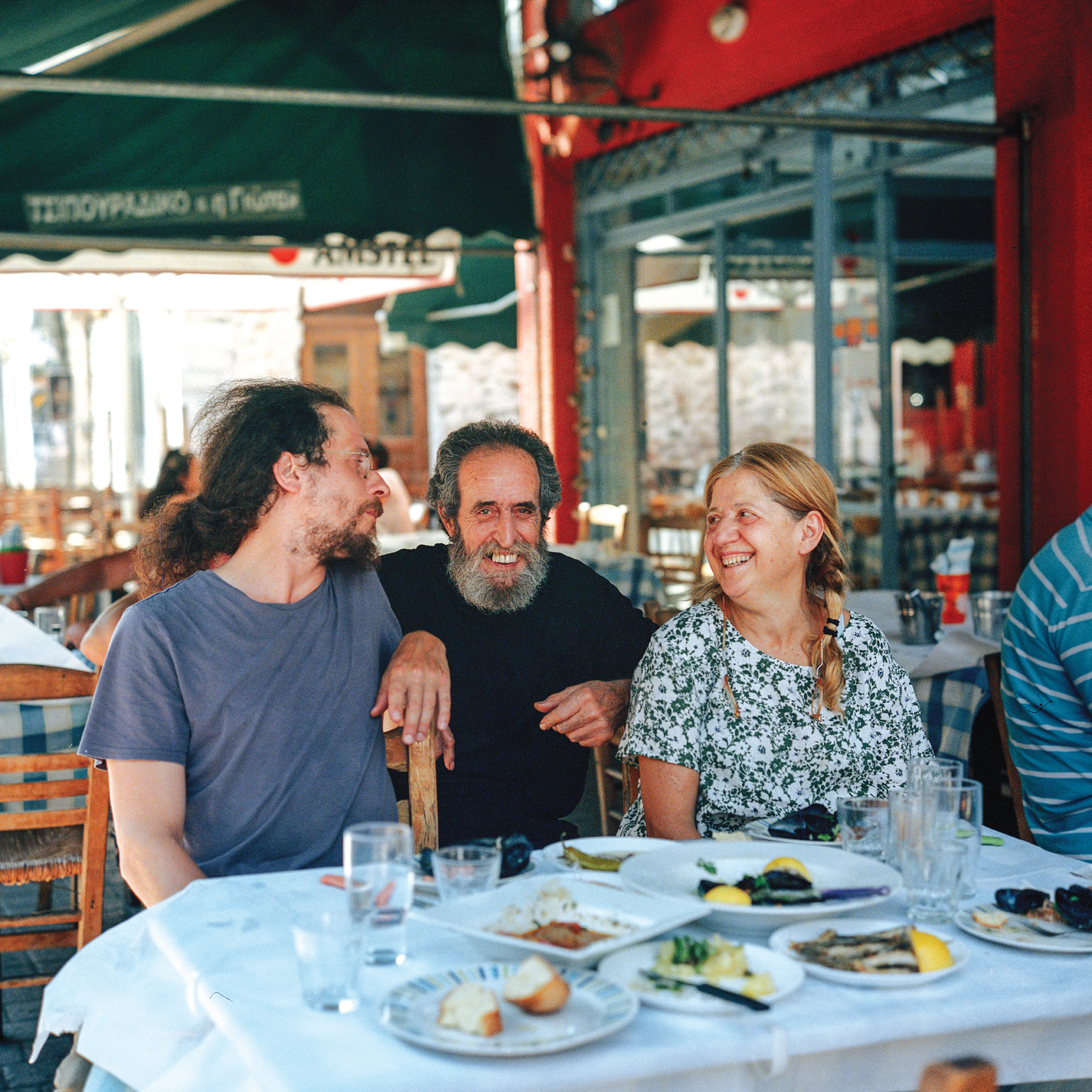 Another important element of the tsipouro recipe is the shop owner himself. A good “tsipouras” is a man who makes jokes, quips and shares witty exchanges with the patrons, while refilling their tiny glasses from his bottle. Good quality tsipouro and an eloquent tsipouras used to be the staples of a successful Tsipouradiko. Today things have changed and tradition lovers are within their rights to complain, since waiters bring a whole bottle of tsipouro to your table at a fixed price, the moment you sit down. The whole choreography and ritual is lost to convenience.
Another important element of the tsipouro recipe is the shop owner himself. A good “tsipouras” is a man who makes jokes, quips and shares witty exchanges with the patrons, while refilling their tiny glasses from his bottle. Good quality tsipouro and an eloquent tsipouras used to be the staples of a successful Tsipouradiko. Today things have changed and tradition lovers are within their rights to complain, since waiters bring a whole bottle of tsipouro to your table at a fixed price, the moment you sit down. The whole choreography and ritual is lost to convenience.
If I have a particular place in mind while writing these lines, this would be Filaraki (Krokiou 54, 6950 670794), the epitome of the modern Tsipouradiko. It combines traditional values and the novelty of the modern world. Everything here is prepared on the grill, fish and shellfish reign, preserving the dock workers customs from the older times. But there’s more than that. Alekos is a man of this era. He’s taking care of the customers, while his wife and son are in the kitchen. A family with environmental conscience, who only serves Santorini fava topped with a slice of organic grilled eggplant and a kale salad grown in an organic farm nearby, a green splendor served last, so as to appease from an iodine and protein feast.
Kavouras (Hadjiargyri 3, 24210 28520) is in business for over seventy years, in fact it is the oldest Tsipouradiko in the center of Volos. An authentic male haunt with old Kafeneion tables Kavouras grills only the freshest catch of the local barges, from mackerel to lobster and charcoal cooked potatoes. (Closed in the evenings)
Yiota (Krokiou 15, 6947 074830), in the heart of the Palaion promenade, is loyal to traditional flavors and serves squid grilled with its ink, steamed spicy mussels, garfish, saganaki with shrimps, stewed seafood. Located right in the hustle and bustle of the town, it is the place to be.
Go to Demiris (Efraimidou 23, N. Ionia, 24210 65559) with a large company and taste all the weird delicacies of the sea: sea anemones (Kolitsianoi), octopus olio, octopus or squid eggs, wild oysters, sea figs, samphire or tsitsiravla, in a nostalgic cult environment supervised by Mr. Demiris himself, a former singer and great diver.
Yianna-Nikos (24210 22767), with the tables set under the thick mulberry trees in Palaion Square is the meeting point of the university community and offers the most frugal and fresh meze: samphire with octopus and grilled peppers, shellfish, cured mackerel, mussels, live rock lobster, baby shrimps and fried eggs with pastrami, as a climactic treat. (Closed in the evenings)
Aivali (Sefel 15, 24212 14488) is run by women cooking in a spic-and-span kitchen to prepare pristine flavors, served in a picturesque alley in the center of Volos: perfect and non-greasy Kolitsianoi, crispy anchovies served with vinegar in a shot glass, fresh greens with grilled fish and homemade halva. (Closed in the evenings)
At Marina (Magnisias 13, N. Ionia, 24210 66245) you will try fresh little fish from the fishing boats of Volos, as well as stewed meze straight from the hands of Marina: Gouna (bonito) sundried or cooked with leeks, rock lobster with orzo, pastirma with eggs, octopus with leeks and her famous Keftedakia (fried meatballs).
Jimmy’s (Miaouli 75, N. Ionia, 24210 30093) is also a place you should visit with a large group of friends and order the whole “mostra”! This will bring to your table the whole tsipouro meze shebang: fresh shells, grilled fish and kolitsianoi, saganaki and squid, the ideal ingredients for a tsipouro feast.
Bonis (Iolkou 314, 24210 53534) is old, yet new. Classic and traditional, it grew and expanded across the street, but still serves its relished typical dishes: grilled mushrooms, fresh shellfish, octopus with boiled zucchini, grilled angler with garlic spread and the Volos’ buttery manouri cheese with tomato paste.

